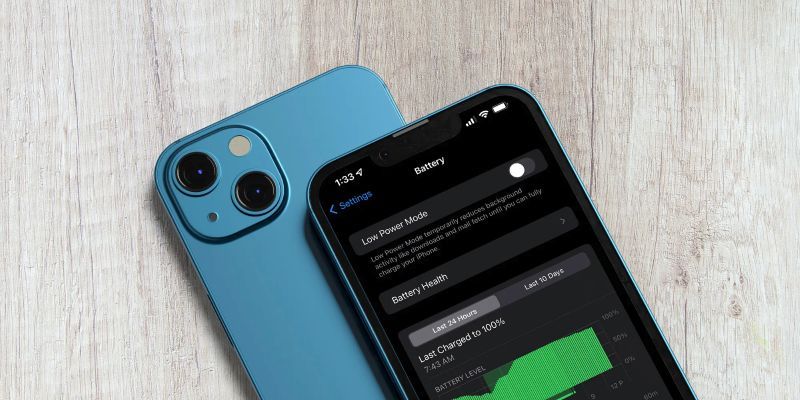

Discover effective strategies to maximize your iPhone's battery life with iOS 18. From simple settings adjustments to advanced power-saving techniques, this comprehensive guide has you covered. Let's learn more about this topic below with Iron Snout.
iOS 18 introduces several new battery management features that can significantly extend your iPhone's battery life. These innovations build upon Apple's commitment to energy efficiency and user experience. By familiarizing yourself with these features, you can take full advantage of your device's power-saving capabilities.
One of the key improvements in iOS 18 is the enhanced Battery Health feature. This tool provides more detailed insights into your battery's condition and usage patterns. It now offers personalized recommendations based on your specific usage habits, helping you make informed decisions about when and how to charge your device.
Another noteworthy addition is the Adaptive Battery Management system. This intelligent feature learns from your daily routines and charging habits to optimize battery performance. It can predict when you're likely to need more battery power and adjust system resources accordingly, ensuring you have enough juice when you need it most.
Your iPhone's display is one of the biggest power consumers, so optimizing its settings can lead to significant battery savings. iOS 18 offers several options to reduce display-related power consumption without compromising user experience.
Start by adjusting your screen brightness. In iOS 18, you can now set different brightness levels for various environments or times of day. This adaptive brightness feature ensures optimal visibility while conserving battery power. You can access this setting in the Display & Brightness section of the Settings app.
The Dark Mode feature, introduced in earlier iOS versions, has been further refined in iOS 18. It now consumes even less power on OLED displays. Enable Dark Mode by going to Settings > Display & Brightness and selecting "Dark" under Appearance. You can also schedule Dark Mode to activate automatically at sunset or at a custom time.
iOS 18 introduces more granular controls for Screen Time, allowing you to set specific time limits for individual apps. This not only helps manage your digital wellbeing but also conserves battery life by reducing overall screen-on time. You can access these controls in Settings > Screen Time.
Consider disabling the "Raise to Wake" feature if you find it unnecessarily activating your screen. This can be turned off in Settings > Display & Brightness. Additionally, reduce the auto-lock time to ensure your screen turns off quickly when not in use. This setting can be adjusted in Settings > Display & Brightness > Auto-Lock.
Background App Refresh and push notifications can significantly impact your battery life. iOS 18 provides more advanced controls for managing these features, allowing you to strike the right balance between functionality and power efficiency.
In the Settings app, navigate to General > Background App Refresh. Here, you can choose to disable this feature entirely, allow it only when connected to Wi-Fi, or selectively enable it for specific apps. Consider turning it off for apps that don't require constant updates.
Push notifications, while useful, can be a drain on your battery. iOS 18 introduces a new "Notification Summary" feature that groups non-urgent notifications and delivers them at scheduled times. This reduces the frequency of screen wake-ups and associated battery drain.
Location Services are another significant battery consumer. In iOS 18, you have more control over how apps use your location data. Go to Settings > Privacy > Location Services to review and adjust permissions for each app. Consider setting apps to use your location only while you're using them, rather than always.
The new "Precise Location" toggle in iOS 18 allows you to choose between precise and approximate location sharing for each app. Disabling precise location for non-essential apps can help conserve battery life without significantly impacting functionality.
iOS 18 introduces several advanced power management tools that can help extend your battery life in various situations. These features are designed to give you more control over your device's power consumption while maintaining optimal performance.
The new "Battery Saver Mode" in iOS 18 is an enhanced version of the previous Low Power Mode. It now offers more customization options, allowing you to choose which features to disable or reduce when activated. You can access this mode in Settings > Battery or by adding it to your Control Center for quick access.
iOS 18 also introduces "Smart Charging," a feature that learns from your charging habits to optimize battery health. It can pause charging at 80% and time the final charge to complete just before you typically unplug your device. This helps reduce battery wear and extend its overall lifespan.
Wireless and cellular connections can be significant battery drains. iOS 18 provides more advanced controls for managing these connections. The new "Network Assistant" feature automatically switches between Wi-Fi and cellular data based on signal strength and connection quality, helping to conserve battery life.
Consider disabling 5G when you don't need its high-speed capabilities. In Settings > Cellular > Cellular Data Options, you can choose "4G" or "LTE" to save battery life. Similarly, turn off Wi-Fi and Bluetooth when not in use. iOS 18 makes this easier with new Control Center shortcuts.
The "Auto-Join Hotspot" feature in iOS 18 is more intelligent, only connecting to known hotspots when Wi-Fi is unavailable. This prevents unnecessary battery drain from constant network scanning. You can configure this in Settings > Cellular > Personal Hotspot.
App optimization plays a crucial role in preserving battery life. iOS 18 provides new tools and insights to help you identify and manage power-hungry apps. The enhanced Battery Usage section in Settings now offers more detailed breakdowns of app energy consumption.
Pay attention to apps that frequently appear at the top of this list. Consider alternatives or adjust their settings to reduce power consumption. For instance, you might disable auto-play for video apps or reduce sync frequency for email clients.
iOS 18 introduces a new "App Power Report" feature. This weekly summary provides insights into which apps are consuming the most power and offers suggestions for optimizing their usage. You can access this report in Settings > Battery > Battery Health & Charging.
Several system-wide optimizations can contribute to better battery life. Ensure your iOS 18 and all apps are up to date, as updates often include performance improvements and bug fixes that can positively impact battery life.
Consider enabling the "Optimized Battery Charging" feature if you haven't already. This helps reduce battery aging by delaying charging past 80% in certain situations. You can find this option in Settings > Battery > Battery Health & Charging.
Regularly clear out unnecessary data and apps. iOS 18's improved Storage Management tool can help identify large files and unused apps that may be impacting system performance and battery life. Access this in Settings > General > iPhone Storage.
Despite all these optimizations, you may still encounter unexpected battery drain. iOS 18 provides enhanced diagnostic tools to help identify and resolve such issues. The new "Battery Health Check" feature can run a comprehensive analysis of your battery's condition and usage patterns.
If you notice sudden or severe battery drain, start by checking for any recent changes in your settings or app installations. The "Battery Usage History" in iOS 18 now provides a 30-day view, making it easier to spot unusual patterns or sudden changes in battery consumption.
Consider resetting all settings if the issue persists. This can often resolve underlying software issues without the need for a full device reset. You can do this by going to Settings > General > Transfer or Reset iPhone > Reset > Reset All Settings.
If you've tried all these steps and still experience significant battery drain, it may be time to consult Apple Support or visit an Apple Store. iOS 18 includes an improved diagnostic feature that can be run remotely by Apple Support, potentially saving you a trip to the store.
Remember that batteries naturally degrade over time. If your iPhone is more than two years old, you might want to consider a battery replacement. iOS 18's Battery Health section provides a clear indication of when a replacement is recommended.
By implementing these strategies and taking advantage of iOS 18's new features, you can significantly extend your iPhone's battery life. Remember, the key is to find the right balance between functionality and power efficiency that works for your specific needs and usage patterns. With a little effort and the right knowledge, you can ensure your iPhone lasts throughout the day, no matter how demanding your schedule may be.